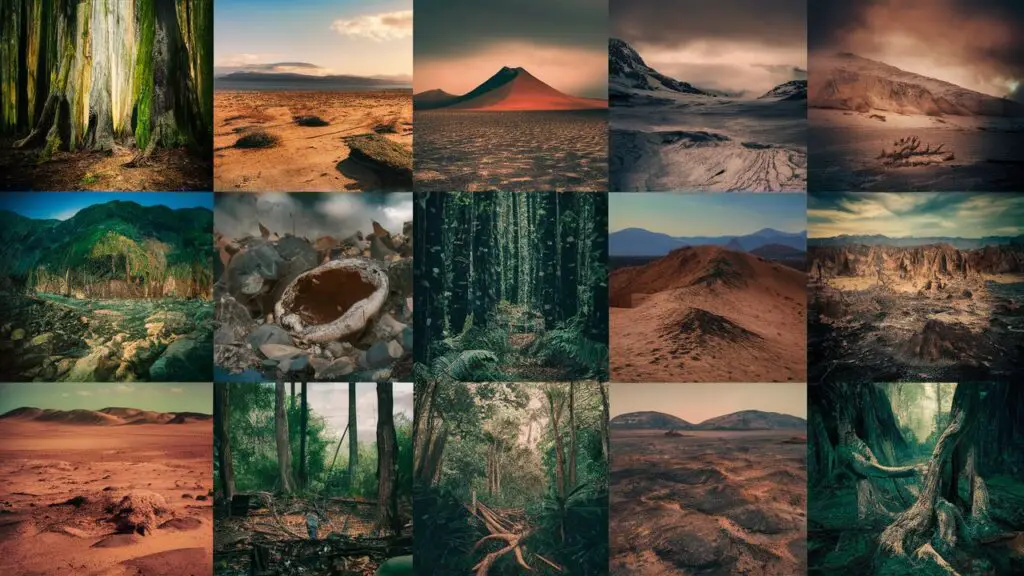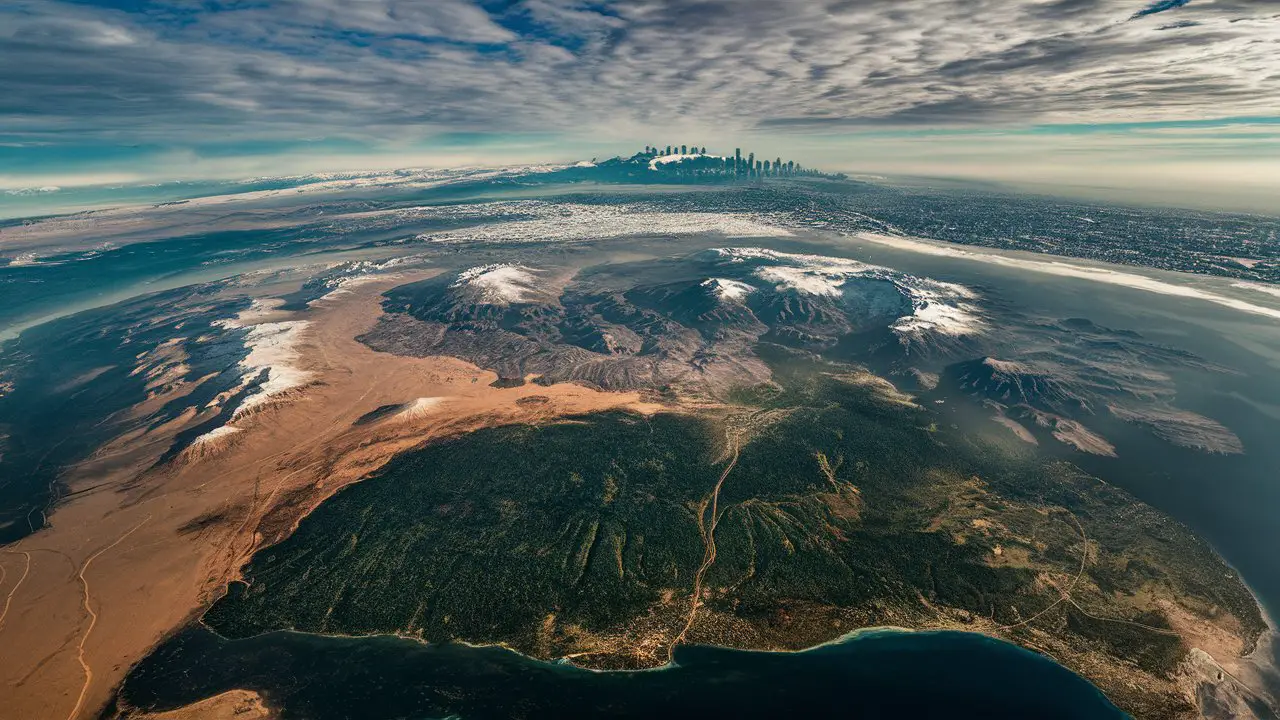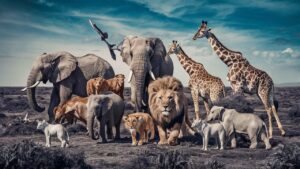As you gaze upon the vast beauty of nature, consider for a moment the astounding biodiversity that envelopes our planet. With over 8 million species of plants and animals, Earth harbors an incredible array of life. Yet many aspects of this biodiversity remain undiscovered, waiting to be revealed through further exploration. Journey with us as we delve into Earth’s ecosystems and survey the diversity of species that inhabit our world. From tropical rainforests to expansive grasslands, each biome supports a unique community of organisms adapted to thrive in their environment. Join us on an illuminating expedition through the rich tapestry of life that covers our planet. Through examining biodiversity on a global scale, we gain perspective on our intricate web of interconnected ecosystems that sustain all living things.
What Is Biodiversity and Why Is It Important?
Biodiversity refers to the variety of life on Earth at all its levels, from genes to ecosystems, and the ecological and evolutionary processes that sustain it. Our planet’s diverse species, ecosystems, and genetic variability are all interconnected in a vast, complex web of life. ###Genetic Diversity Genetic diversity refers to the variation of genes within a species. It allows species to adapt to changes in the environment over time through evolution. With greater genetic diversity, a species has a higher chance of surviving threats like diseases or changes in climate.
Species Diversity
Species diversity refers to the variety of living species on Earth, from bacteria to humans. A high level of species diversity indicates a healthy ecosystem with many ecological niches that can be filled. It also provides more resources and benefits for humans, such as foods, medicines, and industrial products.
Ecosystem Diversity
An ecosystem is a community of organisms and their physical environment interacting as a system. Ecosystem diversity refers to the variety of ecosystems on Earth, from deserts to rainforests. Diverse, well-balanced ecosystems with many species are more productive, stable, and resilient in the face of environmental changes.
Biodiversity is essential for the health of our planet and all life on Earth. By protecting habitats and ecosystems, reducing pollution, and conserving natural resources, we can help preserve Earth’s irreplaceable biodiversity for future generations. The diversity of life has intrinsic value, and our lives depend on it.
Hotspots of Biodiversity Around the World
Tropical Rainforests
Tropical rainforests are home to the vast majority of the world’s plant and animal species. Spanning across Central and South America, Africa, and Asia, rainforests contain millions of species, many of which are found nowhere else on Earth. However, rainforests are disappearing at an alarming rate due to deforestation for agricultural land and logging. Protecting rainforests is crucial to conserving biodiversity.
Coral Reefs
Coral reefs are diverse ecosystems located in shallow, well-lit, tropical and subtropical coastal waters. Although they cover less than 1% of the ocean floor, coral reefs are home to more than 25% of all marine species. The Great Barrier Reef off the coast of Australia is the largest coral reef system, spanning over 1,400 miles. However, coral bleaching due to climate change poses a severe threat to coral reefs around the globe.
Mediterranean Basin
The Mediterranean basin, encompassing parts of Europe, Asia, and Africa, is considered a biodiversity hotspot due to its high levels of plant diversity and endemism. The Mediterranean climate, with hot, dry summers and mild, rainy winters, supports woodlands, scrublands, and grasslands. However, urban expansion, tourism, pollution, and climate change are degrading habitats in the Mediterranean basin. Protecting remaining natural areas and promoting sustainable use of resources are key to safeguarding biodiversity.
In summary, tropical rainforests, coral reefs, and the Mediterranean basin are three of the most critical hotspots for biodiversity on the planet. Conserving these ecologically rich yet threatened regions is vital for protecting the diversity of life on Earth. By establishing protected areas, promoting sustainable use of natural resources, and reducing pollution, we can help ensure these global biodiversity hotspots are preserved for generations to come.
Threats to Global Biodiversity
Humans pose the greatest threats to biodiversity on Earth. As the human population has grown exponentially, we have appropriated an increasing amount of the planet’s resources for our own use. Our actions have led to habitat destruction, pollution, overexploitation of species, and climate change — all of which endanger biodiversity.
Habitat Destruction
The conversion of land for human use is the leading cause of habitat destruction. Forests are cleared for timber, agricultural land, and development. Wetlands are drained and coastlines are developed. As habitats shrink in size and become fragmented, biodiversity declines. Many species cannot survive in the small, isolated patches of habitat that remain. Habitat destruction threatens more species than any other human activity.
Pollution
Pollution from human activities also harms biodiversity. Pesticides, fertilizers, and other chemicals leach into the environment, accumulating in the tissues of organisms and passing up the food chain. Plastic pollution litters habitats and entangles and poisons wildlife. Oil spills and industrial waste destroy entire ecosystems. As pollution intensifies, species populations drop and many species face higher risks of extinction.
Overexploitation
Humans have hunted many species to the brink of extinction for food, medicine, fur, and other purposes. Today, unsustainable fishing and poaching remain serious threats to many species, including whales, sharks, tigers, rhinos, and elephants. Unregulated trade in wildlife and wildlife parts on the black market fuels poaching. As species are overexploited, the complex food webs in ecosystems become unstable, putting other species at risk.
Climate Change
Climate change poses catastrophic threats to biodiversity. As the climate continues to warm, many species cannot adapt quickly enough and go extinct. Sea levels are rising, threatening coastal and island habitats. Changes in weather patterns lead to more frequent and intense droughts, heat waves, and floods. The ranges and distribution of many species will shift, disrupting ecological communities. Climate change acts as a threat multiplier, intensifying the impacts of habitat destruction, pollution, and overexploitation on biodiversity. Urgent action is needed to mitigate and adapt to climate change to protect global biodiversity.
Protecting and Preserving Diverse Ecosystems
Identifying and Understanding Ecosystems at Risk
To protect the Earth’s biodiversity, we must first identify ecosystems that are most at risk of disappearing. Tropical rainforests, coral reefs, and wetlands are some of the most diverse yet fragile ecosystems. They are home to the vast majority of the world’s plant and animal species but are rapidly declining due to human activity like deforestation, pollution, and climate change. We must make efforts to understand these vulnerable ecosystems by studying how they function and mapping where they are located geographically.
Implementing Conservation Strategies
Once at-risk ecosystems have been identified and understood, specific conservation strategies can be put in place. Setting aside protected areas like national parks, wildlife refuges, and private nature reserves are effective for safeguarding land and sea habitats. Strict regulations on human activities like limiting deforestation, controlling pollution, and sustainably managing natural resources should also be enforced. Restoration efforts such as replanting native vegetation, cleaning up waterways, and restoring wetlands are also critical to rebuilding degraded ecosystems.
Fostering Collective Action
Protecting the planet ultimately requires a collaborative effort across borders and cultures. Non-governmental organizations, local communities, and private individuals all have a role to play in conservation. Grassroots campaigns to raise public awareness about environmental issues can encourage more sustainable consumer and lifestyle choices. International agreements and policies on topics like reducing carbon emissions, protecting migratory species, and sharing genetic resources are also necessary to address threats that transcend national boundaries. Every small action can make a difference when taken collectively.
By identifying imperiled ecosystems, implementing focused conservation strategies, and working together across sectors, we can curb biodiversity loss and preserve Earth’s natural heritage for future generations. Protecting ecosystems is a shared responsibility that will require global cooperation to overcome, but the rewards of success are invaluable.

Biodiversity FAQs: Your Top Questions Answered
What exactly is biodiversity?
Biodiversity refers to the variety of life on Earth at all its levels, from genes to ecosystems, and the ecological and evolutionary processes that sustain it. In short, it encompasses the diversity of genes, species, and ecosystems on the planet. High levels of biodiversity indicate a healthy ecosystem with complex interactions between organisms.
Why is biodiversity important?
Biodiversity is crucial for the proper functioning of ecosystems and the services they provide. Diverse ecosystems are more productive, stable and resilient in the face of environmental change. Biodiversity also provides economic benefits to humans in the form of food, raw materials, medicines, recreation, and tourism. Over one billion people rely directly on natural resources for their livelihoods.
What are the major threats to biodiversity?
The primary threats to biodiversity are human activities that destroy or degrade habitats, introduce invasive species, overexploit natural resources, and pollute the environment. Habitat loss and degradation pose the greatest threat, mainly due to agricultural expansion, logging, mining, and urban development. Climate change is also an increasing threat, altering ecosystem conditions and the distribution of species. Poaching, overfishing, and other unsustainable harvesting threaten many plant and animal species.
How can we protect biodiversity?
- Protecting biodiversity requires coordinated global action to curb threats like habitat destruction, overexploitation, pollution, invasive species, and climate change.
- Establishing protected areas to safeguard habitats and species.
- Promoting sustainable use of natural resources.
- Reducing pollution and transitioning to renewable energy.
- Regulating trade in threatened species.
- Educating people about the importance of biodiversity.
- Supporting biodiversity research and monitoring to guide evidence-based policymaking.
Protecting our planet’s biodiversity is crucial for ensuring healthy, functioning ecosystems that can sustain human societies and economies long into the future. With collective action, we can curb threats to biodiversity and protect life in all its diversity.
Conclusion
As you have seen, our planet contains a vast diversity of life, with millions of species filling every corner of land, sea, and sky. This wondrous biodiversity underpins the health of ecosystems and supports human life in countless ways. Yet it now faces grave threats from climate change, habitat loss, pollution, and other human impacts. The future of Earth’s astonishing web of life rests in our hands. We all have a role to play in understanding, cherishing and protecting the natural heritage with which we have been entrusted. Take time to learn about the species in your own region. Advocate for conservation. Make choices that reduce your environmental footprint. Our children and grandchildren deserve to inherit a world as rich in biodiversity as the one we now enjoy. The responsibility is ours to be wise stewards.
Don’t Miss a Thing! Enhance Your Wildlife Photography with Ultra-X Night Vision Goggles.
GET NOW!






